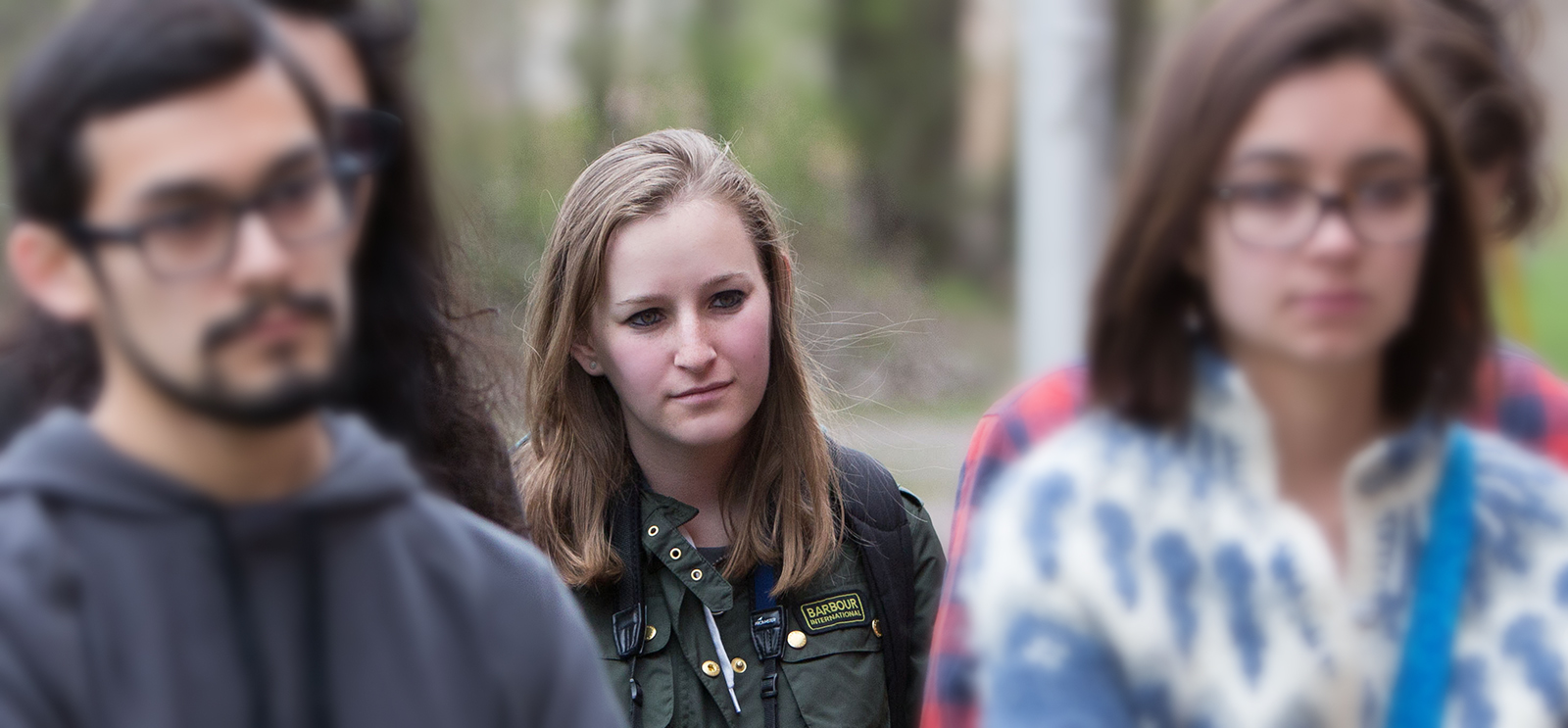
(Photography by John Zich)
An interview with Study Chicago participant Chelsea Fine, Class of 2016.
Chelsea Fine, Class of 2016 (public policy), was born in Chicago. She grew up in Phoenix, Arizona; Berkeley, California; Washington, DC; and McLean, Virginia. Last winter she studied abroad through the College’s social sciences in Paris program.

I like Chicago. I just don’t really like it compared to some of the places where I’ve lived. When we were at the Hideout, I think Dmitry [Samarov, author of Hack: Stories from a Chicago Cab] said it best: You have to study the places where you live, because that’s how you’re going to enjoy yourself there. That’s really why I did this program: to force myself to learn about the city and get out more.
[[{"type":"media","view_mode":"media_original","fid":"3422","attributes":{"alt":"","class":"media-image","height":"648","typeof":"foaf:Image","width":"500"}}]](Photography by John Zich)

The field trips were the most memorable. That’s what set this program apart from a regular class on Chicago. We saw The Project(s), we went to Marquette Park, South Works, WBEZ, the Chicago History Museum, City Hall—so many cool things like that.
[[{"type":"media","view_mode":"media_original","fid":"3427","attributes":{"alt":"","class":"media-image","height":"540","typeof":"foaf:Image","width":"500"}}]] (Photography by John Zich)

I had been to City Hall before. I worked for Rahm [Emanuel] for three months last winter in the Office of Press and Communications. Mostly it was watching the news and creating daily and hourly news clips. I could have told you every single thing that was going on in the city of Chicago. I knew how many potholes had been filled. I knew how the Chicago Olympians were doing. I certainly knew the weather.
I also got to help with language for press releases, talk to reporters, talk to confused constituents. I really enjoyed it. I just had to stop because the schedule was too much with my course load.

In Chad’s [Broughton, AM’97, PhD’01,] class [Remaking Chicago], it was great to do an ethnography project. I learned so much about the political landscape in Chicago. In Paul’s [Durica, AM’06, PhD’13] class [Representing Chicago], I really liked that he took us out on excursions for class time—he took us to the places we were talking about. We did three excursions: the Newberry Library, the South Side Community Arts Center in Bronzeville, and the Hideout.

I think Pullman is fascinating. It reminds me of casinos, when you step into a place that’s so deliberately designed to induce a certain set of behaviors. I was quite taken with Pullman right away, originally for photography. My final paper for Kathy [Conzen] is about the original bandmaster of the Pullman Marching Band.
[[{"type":"media","view_mode":"media_original","fid":"3421","attributes":{"alt":"","class":"media-image","height":"331","typeof":"foaf:Image","width":"500"}}]]Pullman Marching Band. (Pullman State Historic Site)

The doors don’t really symbolize anything. I just thought that Pullman was really beautiful, and the way the buildings looked side by side was really beautiful.
Pullman is a huge deal right now. It’s becoming a national monument.
[[{"type":"media","view_mode":"media_original","fid":"3423","attributes":{"alt":"","class":"media-image","height":"500","typeof":"foaf:Image","width":"500"}}]]
[[{"type":"media","view_mode":"media_original","fid":"3424","attributes":{"alt":"","class":"media-image","height":"500","typeof":"foaf:Image","width":"500"}}]]
[[{"type":"media","view_mode":"media_original","fid":"3425","attributes":{"alt":"","class":"media-image","height":"500","typeof":"foaf:Image","width":"500"}}]]
[[{"type":"media","view_mode":"media_original","fid":"3426","attributes":{"alt":"","class":"media-image","height":"500","typeof":"foaf:Image","width":"500"}}]](Photography by Chelsea Fine)

But right now there’s nothing there. If you walk down the streets, there are hardly any people. There are no real restaurants. It’s in a food desert. It’s just a bizarre place.
There are a lot of homes in Pullman that are kind of falling apart. The nice ones near the factory have been restored. But the further you get from the factory and the historic center, you see paint chipping, crumbling sidewalks, boarded-up windows.
All that is probably going to change. Is it even going to be a neighborhood anymore in 20 years?
